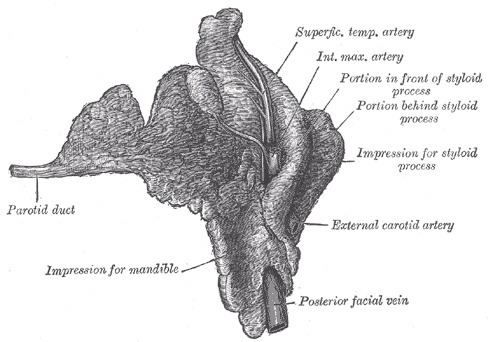Latin Ductus parotideus Dorlands/Elsevier d_29/12315033 FMA 10420 | MeSH A03.556.500.760.640 TA A05.1.02.007 | |
 | ||
The parotid duct or Stensen duct is a duct and the route that saliva takes from the major salivary gland, the parotid gland into the mouth.
Contents
Eponym
It is named after Nicolas Steno (1638–1686), a Danish anatomist credited with its detailed description in 1660.
Structure
The parotid duct is formed when several interlobular ducts—the largest ducts inside the parotid gland—join. It emerges from the gland and runs forward along the lateral side of the masseter muscle. In this course, the duct is surrounded by the buccal fat pad. It takes a steep turn at the border of the masseter and passes through the buccinator muscle, opening into the vestibule of the mouth, the region of the mouth between the cheek and the gums, at the parotid papilla, which lies across the second superior molar tooth.
The buccinator acts as a valve that prevents air forcing into the duct, which would cause pneumoparotitis. Running along with the duct superiorly is the transverse facial artery and upper buccal nerve; running along with the duct inferiorly is the lower buccal nerve.
The exit of the parotid ducts can be felt as small bumps (Papillae) on both sides of the mouth, and are usually positioned next to the maxillary second molars.
Clinical relevance
Blockage, whether caused by salivary duct stones or external compression, may cause pain and swelling of the parotid gland (parotitis).
Koplik's spots which are pathognomonic of measles are found near the opening of the parotid duct.
